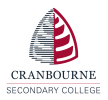An OTR is an instructional question, statement, or gesture made by the teacher seeking an active response from students, and addresses the number of times the teacher provides requests that require students to actively respond (Miller, 2009). Simonsen, Myers, & DeLuca (2010) define OTR as a teacher behaviour that prompts or solicits a student response (verbal, written, or gesture).
The use of multiple OTRs within classroom instruction ensures that students are engaged and actively involved in learning. The more time students spend engaged in learning activities, the more they learn. Additionally, increased rates of responding and the subsequent improved learning tend to increase the amount of material that can be covered.
Verbal responses are familiar teacher strategies that focus on students orally answering a question, sharing their ideas, reviewing or summarising prior learning, or simply repeating a new concept after the teacher. There are two common types of verbal response strategies: individual response and choral response.
| Individual response | Choral response |
| A question is delivered to an individual student. Verbal: Calling on students individually with increased frequency Round-robin for individual responses Pulling a random student’s name out of container Non–verbal: Students “stop and jot” down their answers Calling on students unpredictably heightens student attention. You need to teach students this strategy. You may prepare students by using Choral response strategies first. | All students in class respond in unison to a teacher question. Suitable for review, to teach new skills, as a drill, or as a lesson summary. Choral responding has been demonstrated to be effective at all levels – primary and secondary grades for students with and without disabilities (Cavanaugh, Heward, & Donelson, 1996; Godfrey, Grisham-Brown, Hemmeter, & Schuster, 2003; Heward, 2006). |
Introducing a mix of both strategies can provide an element of surprise and cue students to heighten their attention. It will also help you to assess individual student learning.
Implementation:
Individual Response
- Use a seating chart and call on students randomly; tally on the chart to monitor the rate of questions presented to each student.
- Student names can be on strips of paper or icy-pole sticks in a can or jar. As questions are posed, a student name is drawn.
- Using one of the above random call strategies, ask a student to repeat or summarise what the student who just answered said.
Remember to ask the question first, and then pause before calling on the student to respond. This allows an opportunity for all students to think and be prepared to respond.
Choral Response
Many teachers default to calling on eager volunteers, which results in interacting with a few students, while others may disengage. Using a response pattern is a simple strategy to make sure that all students are called on and engaged in their learning.
Carol keeps track of who responds by putting a dot on her seating chart. This helps her avoid calling on the same volunteers too frequently. She has explained her approach to the students so that they know what to expect.

